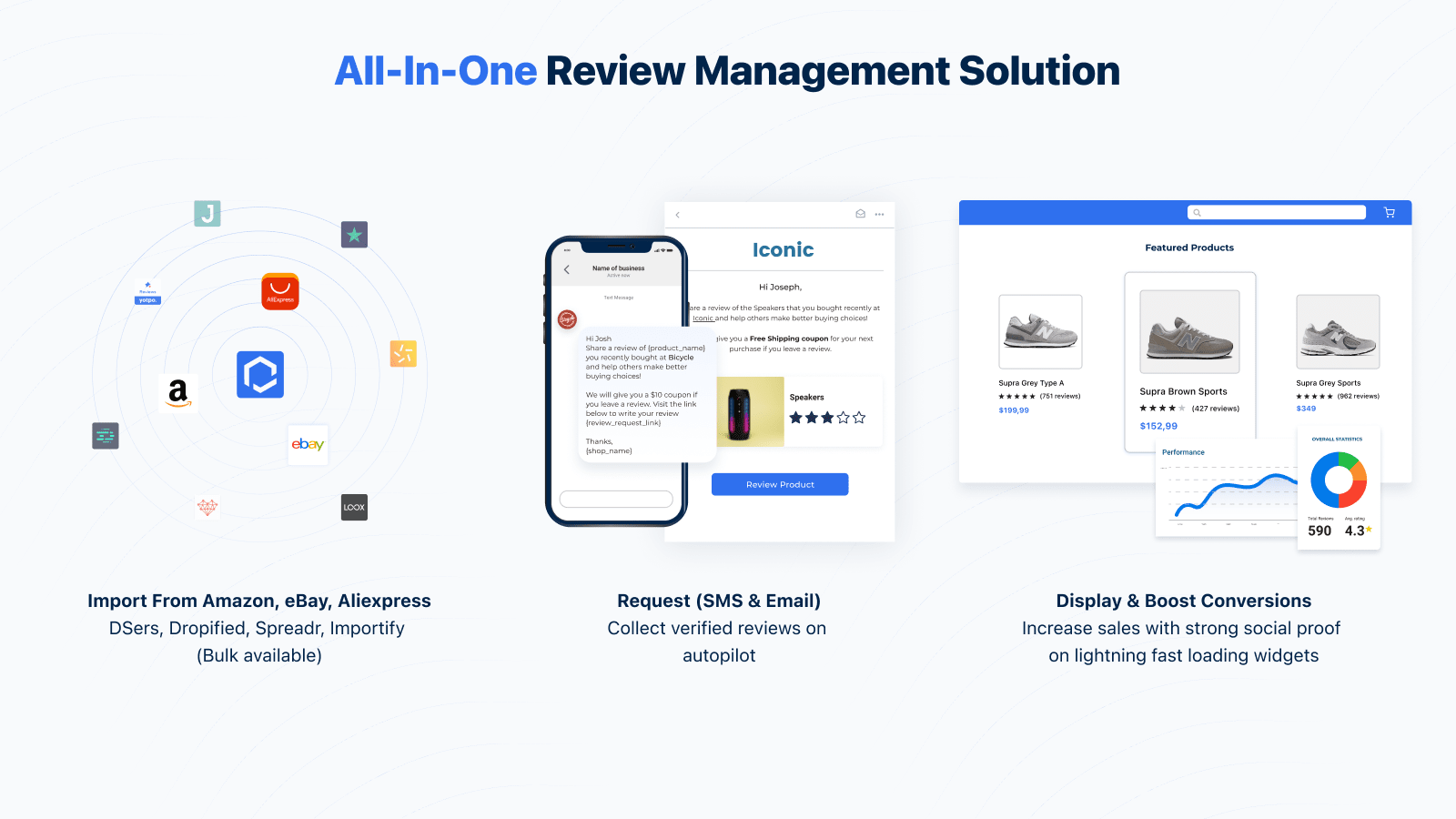
Why Your Direct-To-Consumer Brand Should Sell on Shopify
Table of Contents
Shopify is one of the easiest ways for a brand to sell its products directly to consumers. And one of the cheapest too. But if you've already got something else set up, why bother with direct-to-consumer (D2C) selling? Why disrupt your current setup?
There are plenty of reasons, so let's take a closer look.
Better Profit Margins with Shopify for D2C Brands

In theory, direct sales should result in higher profit margins. That may not always be the case, but that's how it works for the most part. Because selling directly to a consumer entails most of the costs associated with selling through a retailer minus the retailer's commission and, in theory, that should go straight to your profit margins.
But things are never that simple. Usually, as you see your profit margins grow, you start to think about where to allocate that extra money to grow your business, so perhaps advertising or offering your product at a lower price. Still, instead of paying someone else, you're the one deciding what to do with that margin. It's your wiggle room now, not theirs.
If you're not offering your product exclusively direct-to-consumer and have other channels available, your agreements with retailers might limit the price at which you can offer your products. But you can make up for that by throwing out perks like free shipping or any other kind of coupon or discount and still make more money off of each sale than through a retailer.
Higher profit margins are a good enough reason to do it. However, there are other reasons for going direct-to-consumer that have a greater impact on your business in the long run. Let's take a look at those.
A More Carefully Crafted Customer Journey

The main thing that direct-to-consumer selling offers is greater control over everything, from A to Z. This is a clear opportunity to think more carefully about your customer journey and adjust the process your customers go through while interacting with your brand. Your "customer journey" is each step your customer goes through: from the first time they see your product up until they get their order delivered. And even after. Their experience with your product counts too, and if needed, their interactions with your customer service.
If you're interested in this concept and want to draft your own customer journey map, check out HubSpot's How to Create an Effective Customer Journey Map.
In other words, it's whatever their experience with your brand is. And while you can't control absolutely every single aspect of your customer's experience, there's a lot more you can do when you're selling directly to consumers rather than through a retailer or online marketplaces like Amazon or eBay.
That's where Shopify comes in. Think about how you present your product to the customer and the options that you have available when doing so through Amazon or eBay. Now think of all the options available when showcasing your product through your own Shopify store. It's a world of difference.
Yes, there are limitations to what you can do within the themes available for free on Shopify, but you can shop for premium themes if you want. If you're offering your product through some online marketplace, you have to adjust to whatever way of showcasing products they have for all of them, regardless of whether that's a good fit for yours specifically.
In terms of customer service, when selling through retail, you have to adhere to their terms unless you can agree on a special arrangement for your products. Ultimately, you'll be relying on them to provide customer service. In establishing a direct-to-consumer channel, you have greater control, which means you can make sure your customers always get the best customer service possible. You can determine when to offer a coupon, a refund, re-send your product, or whatever each situation requires. Your house, your rules. That's how you can make sure your customers are treated right.
All these things make a difference in your customer journey. That's what we mean when we say that direct-to-consumer selling lets you have more control over each step of the process, and so you can think more carefully about what you want your customers to experience when dealing with your brand. Having a well-thought-out customer journey is the best way to strengthen your brand identity.
Loyalty Programs, Subscriptions, And Rewards

For direct-to-consumer models, more than half their sales come from returning customers. That means you have to work hard to take care of your customers. You have to let them know you appreciate their business. The go-to way to do that is by creating a loyalty program.
On the Shopify app store, you can find apps that help you create and manage customer loyalty programs, subscriptions, rewards, etc. If you play your cards right, you might get your customers to come back over and over again. Or at least for as long as you're their best option around. So keep an eye out for your competitors and what they're offering.
Another way to get recurrent sales is to offer your customers a subscription service. This works exceptionally well if your product is one for which your customers often find themselves needing to resupply.
Beyond what loyalty programs and rewards apps have to offer, there are thousands of apps with different functionalities. In broad terms, most, if not all of the apps on the Shopify app store try to do one of these two things: help you provide an overall better customer experience and increase your sales.
Some are better at it than others. We're pretty confident that we're one of the better ones.
We've prepared a list of the top 20 Shopify apps for D2C brands if you'd like to get started.
Also, if you want your Shopify store to have customer reviews, be sure to check out Opinew. Customer reviews are a very effective way to give first-time customers the confidence they need to make a purchase. And then we offer them a coupon in exchange for their review, generating returning customers. Once they've purchased more than once, that's where your loyalty program should kick in and keep them coming.
Current Trends

The covid-19 pandemic has brought a lot of changes. Some are transitory, others are not. It seems like, for a lot of industries, it accelerated a change that was already happening rather than bring about something entirely new. Whether one particular trend is transitory or not can be assessed but can't be predicted with absolute certainty. That being said, one of the main changes the pandemic has brought is an uproar in direct-to-consumer selling. We bet that this change is here to stay.
Much like food delivery, direct-to-consumer selling had already become a lot easier for anyone to do because of platforms. In the case of food delivery, it was apps like UberEats and Rappi that had brought restaurants that didn't previously deliver straight to your phone. It simply skyrocketed during the pandemic but the platforms that changed the industry were already there. That's what Shopify is doing for online direct-to-consumer selling. And it has been doing it for quite a while now, so it's not going anywhere. And yes, it skyrocketed during the pandemic.
According to Shopify's DTC First: Why More Brands are Using the Direct-to-Consumer Model, 10 years of e-commerce growth happened in just 90 days at the height of the pandemic.
The thing is that, regardless of how tight or lax future restrictions are now that vaccines are available to most of the developed world, customers who hadn't familiarized themselves with buying online have done so. They've purchased online. And now it's there in their mind "I can just grab my phone and click here." And that's something that's not going away.
Customers love having things be as easy as clicking a button.
That's what your Shopify store can do for your brand. A place for your customers to purchase with just a click. And a place for you to showcase your products the way you want them presented to your audience. It's an opportunity to communicate with your audience beyond that, too. It's your store. Do your thing. Strengthen your brand identity through your online store.
Exclusively Direct-to-Consumer VS Non-Exclusively Direct-to-Consumer

There's a case for keeping your options open. You can sell your products through your store, and you can still sell them through Amazon. After all, that's where most consumers search for products first, so there's an obvious advantage to being on Amazon.
It's no secret, though, that some brands have opted out of Amazon in favor of a direct-to-consumer model. But that's an option that makes sense for brands with a very established presence that customers look for regardless of where they are. Think of Nike, for example.
What's important is for you to know that direct-to-consumer selling doesn't entail exclusivity. You can open a door without closing another one. And once your business grows enough for you to consider going exclusively direct-to-consumer, well, then you can.
The beauty of it is that you're in control.
Low Cost of Entry

The direct-to-consumer model isn't new. So what's new about it? Why is it more relevant to you today than it was 10 years ago? It has a lot to do with the Current Trends section mentioned earlier: platforms changing the industry.
Designing a website from scratch with the functionality to safely make purchases isn't cheap. It wasn't cheap 10 years ago, and it isn't cheap now. It's gotten cheaper but nowhere near where it has to be for it to make sense for most. But you don't have to do that.
Setting up your own Shopify store is easy enough that you don't even need to hire anyone to do it. You could, but you don't have to. If you can hire a designer to dress your site better than you would, you should. It's good practice. But that's beside the point; setting up an online store is dirt cheap. You can do it for free even. At least for as long as the free trial lasts.
Shopify plans start at $29/month. That's how much it costs to have an online store these days because you don't have to build it from scratch. There's a platform that does the work for you.
Other perks come with being on a platform millions of people share. There are a lot of people developing amazing tools for you to add-on to your store. That's what we do at Opinew. And there are many other apps with talented developers behind them thinking about how they can make your store better. So really, it's as if you had a ton of developers working for you thinking of things that might be helpful to you and then putting it out there for you to say "yeah, I want this" or "...Nah, that's not for me". The result is that you end up with an incredible amount of possibilities that you couldn't have otherwise had.
It just makes sense.
At this point, we hope to have made a good case for taking your business direct-to-consumer. If you still think it's not worth the shot, we'd love to hear why you think that's the case.

Get started for free
All-in-one review management solution for Shopify stores looking to build trust and increase conversions.
Opinew Blog Newsletter
Join the newsletter to receive the latest updates in your inbox.






